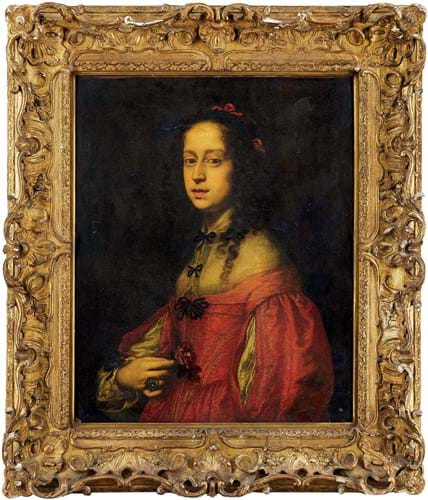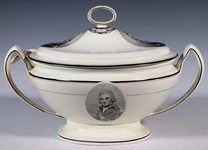This is a market where buyers are discerning and selective, often paying as much attention to intricate factors relating to age and condition as to more evident features such as subject matter, style or quality of execution.
Two factors are pertinent in this regard.
Firstly, a significant group of bidders is always on the look-out for opportunities, aiming to spot works possessing latent value. It’s not uncommon to see certain lots drawing good levels of speculative competition, often leaving the vendor and auction house pleasantly surprised.
Secondly, works that cannot be ascribed to a known artist (or artist’s studio) or are simply in the style of the Old Masters tend to have an upper limit in terms of their value on the market.
In both cases this means that the levels at which works are pitched is crucial in terms of attracting interest – either from the opportunists looking for undervalued material or from those buyers who will hoover up the harder-to-shift pictures.
Sensible estimates
The latest sale of Old Masters, 18th and 19th century pictures at Roseberys (25% buyer’s premium) was led by a number of Continental paintings that drew significant competition, in large part thanks to their sensible estimates.
Head of department Marcus Grey said: “As many Old Master pictures are not exactly defined, ie it is less common to find works fully attributed to a named artist, this allows for more interpretation.
“Works which have old attributions to an artist’s workshop, studio or as a follower may attract differing opinions as to their veracity and subsequently there is often interest from multiple buyers in such pieces which can become very competitive for the better quality examples.”
Intriguing portrait
The top lot at the sale in West Norwood, south London on June 4 was, indeed, such a picture.
An intriguing portrait of a lady, it was catalogued as circle of Pierfrancesco Cittadini (1616-81), an Italian artist known for his attention to detail in his still-lifes and portraits.
This example depicted the half-length subject wearing a red Italo-Hispanic dress and holding a rose. Based on the dress of the sitter and style of painting, a date of c.1640-45 was suggested.
The estimate was set at £6000- 8000 – a level which implied some confidence in the work but was also not overly excessive for a 17th century Old Master with a good subject.
While the artist made a name for himself with still-lifes, Cittadini portraits are also well regarded – the catalogue mentions this work was in keeping with their distinctively Lombard compositional format and naturalism. They can also command high prices, such as a portrait of a young lady in an embroidered dress and pink ribbons in her hair that sold for $102,000 (£83,145) at Christie’s New York in April 2006.
The 2ft 4in x 23in (72 x 58cm) oil on canvas here needed a clean but was well presented in a carved, gilded and gesso embellished frame. With the estimate looking relatively appealing and with bidders seemingly agreeing that it was closely connected to Cittadini, it drew good competition before it was eventually knocked down at £24,000.
Plenty of Vroom
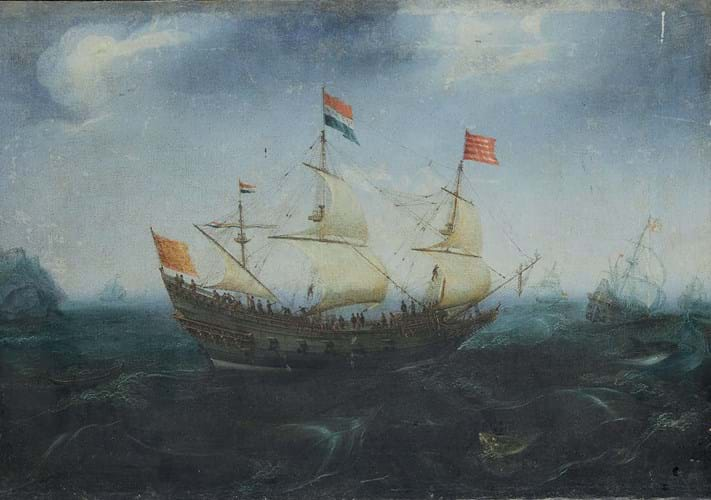
A stronger contest came for a Dutch marine painting which was catalogued as circle of Hendrick Cornelisz Vroom (1562-1640). It was estimated at what proved to be an even more tempting level of £700-900.
Depicting a Dutch triple-mast galley on a rough sea – a whale and what appears to be a sea-monster are visible in the water – the 19in x 2ft 2in (48 x 65cm) oil on canvas had some of the trademark features of the Golden Age painter who is deemed one of the great pioneers and innovators of Dutch marine art.
Scenes of sea battles, merchantmen at port and views of boats sailing off the coast are typical of the artist. This example had similarities to known works by Vroom not just in terms of general subject matter but also in the important details of the sails, rigging and flags too.
The handling and style of the work also stood in its favour in terms of connecting it to the artist which again gave bidders confidence in the ‘circle of’ attribution (a ‘follower of’ work, by contrast, would probably limit its value to the low thousands).
After a number of parties competed strongly, it was knocked down at £19,000.
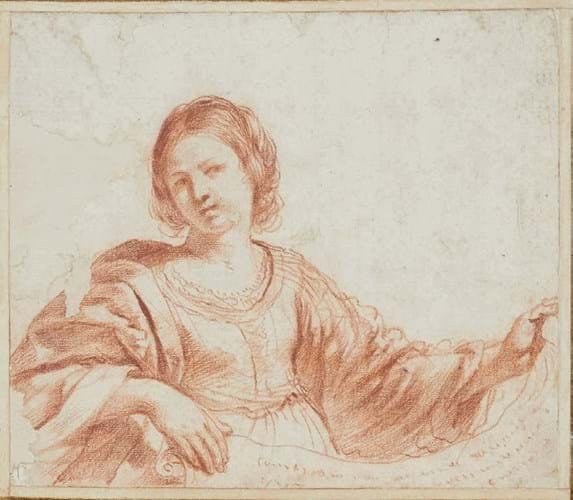
A red chalk study catalogued as ‘Workshop of Giovanni Francesco Barbieri, called Il Guercino’ – £5500 at Roseberys.
Another work that attracted strong interest was an Old Master drawing of a woman shown half-length. The 7 x 8¼in (18 x 21cm) red chalk sketch was catalogued as workshop of Giovanni Francesco Barbieri, called Il Guercino (1591-1666).
Although it was believed to have been created during the artist’s lifetime, the cautious estimate of £1000-2000 made it an additionally attractive proposition and it was knocked down at £5500.
Winter charm
Meanwhile, it was a similar story at Dreweatts’ (25% buyer’s premium) Old Master, European and British Art sale on June 23 in terms of the top lots being ‘circle of’ or ‘attributed to’ paintings.
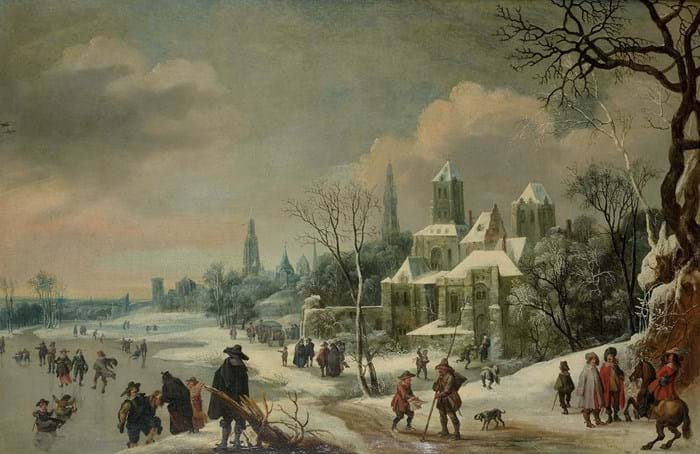
Winter landscape with frozen lake, catalogued as ‘Circle of Nicolaes Molenaer’ – £36,000 at Dreweatts.
Leading the way was a vintage Dutch winter landscape with figures on a frozen lake.
The 2ft 8in x 4ft 1in (82cm x 1.25m) oil on canvas was catalogued as circle of Nicolaes Molenaer (1630-76) and again displayed many of the artist’s trademarks, including the details to the figures and the depth to the landscape.
Such subjects maintain a strong appeal from buyers and works such as this which are deemed high quality, in a good size and in decent condition (this one had some scattered flaking and minor retouching) often perform well at auction – again provided the estimates are ‘right’.
The pitch at the sale in Newbury was £10,000-15,000 which drew a number of interested parties and it was eventually knocked down to the Continental trade at £36,000.
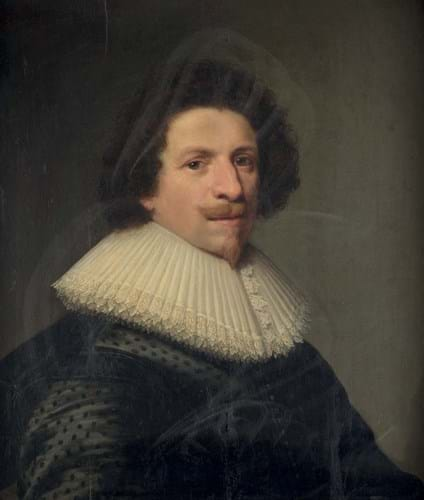
Portrait of a man, catalogued as ‘attributed to Jan Anthonisz van Ravesteyn’ – £22,000 at Dreweatts.
Also selling to the Continental trade was a portrait of a man, said to be the Earl of Clarendon, attributed to Dutch artist Jan Anthonisz van Ravesteyn (c.1570-1657).
The 2ft 2in x 22½in (67 x 58cm) oil on panel had been in the collection of Major General Sir Allan Adair of Flixton Hall, Suffolk, and had come to the vendor by descent. Again, it had recognisable attributes of the artist who was court painter in The Hague and it was executed with a considerable degree of painterly flourish.
However, the picture suffered from a few condition issues: the panel had some light vertical cracks and some retouching was visible under UV light. It also had a white smudgy blemish throughout seemingly caused by a previous cleaning attempt.
In any case, the £5000-7000 estimate was not deemed excessive and it ended up selling at £22,000.
Both these pictures made useful contributions to Dreweatts’ overall total of £281,538 including premium from the 182-lot auction.
Shark shows bite
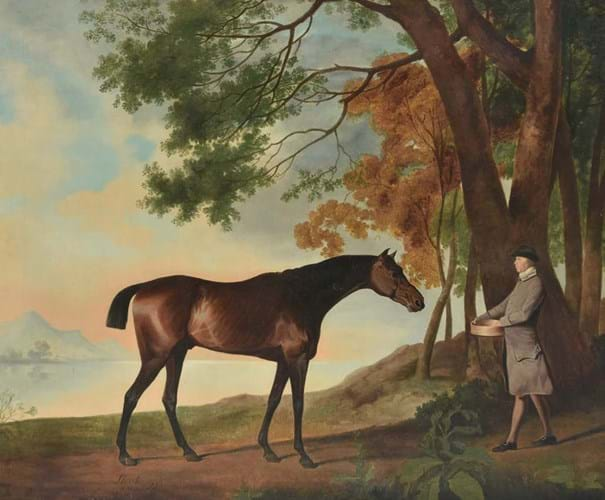
'Shark and his trainer Price in a river landscape', catalogued as ‘Studio of George Stubbs’ – £7000 at Dreweatts.
Elsewhere in the sale an equine painting catalogued as studio of George Stubbs (1724-1806) sold above a £3000-5000 estimate when it was knocked down to a UK private buyer at £7000.
Depicting the stallion Shark – a successful racehorse and one of the Arabian horses from which much of today’s English thoroughbred stock is descended – it was based on a primary version by Stubbs, dated 1775, which is now in the Virginia Museum of Fine Arts. Shark was later exported to the US where he became an important sire at a stud in Virginia.
Not in the best condition with some scratches, losses, retouching and infilling, the picture had previously sold for £23,000 at Sotheby’s in November 1997, which underlined further the importance yet again of the keeping a lid on the estimate.


